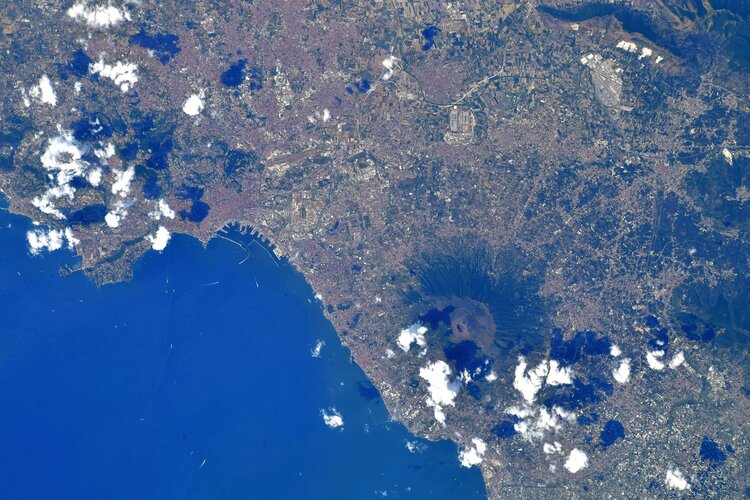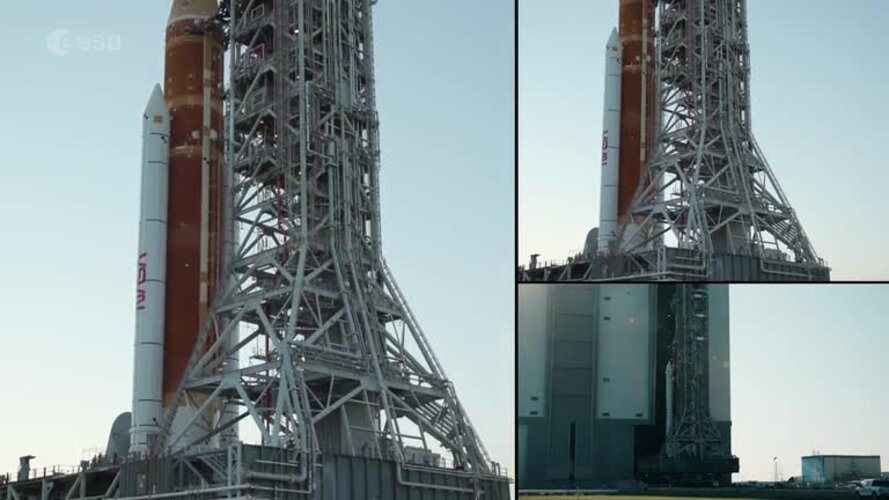
Copernical Team
Week in images: 01-05 August 2022

Week in images: 01-05 August 2022
Discover our week through the lens
South Korean spacecraft launched to the moon, country's 1st

South Korea joined the stampede to the moon Thursday with the launch of a lunar orbiter that will scout out future landing spots.
Researchers create the first artificial vision system for both land and water
 Giving our hardware sight has empowered a host of applications in self-driving cars, object detection, and crop monitoring. But unlike animals, synthetic vision systems can't simply evolve under natural habitats. Dynamic visual systems that can navigate both land and water, therefore, have yet to power our machines - leading researchers from MIT, the Gwangju Institute of Science and Technology (
Giving our hardware sight has empowered a host of applications in self-driving cars, object detection, and crop monitoring. But unlike animals, synthetic vision systems can't simply evolve under natural habitats. Dynamic visual systems that can navigate both land and water, therefore, have yet to power our machines - leading researchers from MIT, the Gwangju Institute of Science and Technology ( US Space Force conducts innovative talent acquisition process
 In May 2022, the U.S. Space Force held a Cyber Constructive Service (CCS) Credit Board, in which the service called for applications from civilian cyber professionals to become cyber officers in the Space Force.
Casting a wide net, approximately 1,000 people attended a virtual conference, with more than 400 applying. The board further narrowed the field and 10 cyber professionals accepted
In May 2022, the U.S. Space Force held a Cyber Constructive Service (CCS) Credit Board, in which the service called for applications from civilian cyber professionals to become cyber officers in the Space Force.
Casting a wide net, approximately 1,000 people attended a virtual conference, with more than 400 applying. The board further narrowed the field and 10 cyber professionals accepted Artemis I spacecraft ready for launch
 Video:
00:03:00
Video:
00:03:00
ESA and NASA’s Artemis I spacecraft is cleared for launch after a series of final tests at the US Kennedy Space Center in Florida. ESA’s European Service Module (ESM) will provide electrical power and propel the uncrewed Orion capsule in an extended orbit around the Moon, setting the scene for future crewed missions. ESA has already delivered its second ESM for Artemis II and is currently building its third ESM. Eventually, Artemis III will return astronauts to the lunar surface for the first time in 50 years with the ESM supplying their life support in the form of
Blue Canyon Technologies opens new factory dedicated to manufacturing cubesats
 Small satellite manufacturer and mission services provider Blue Canyon Technologies LLC ("BCT" or "Blue Canyon"), a wholly-owned subsidiary of Raytheon Technologies, celebrated the grand opening of its new CubeSat Factory in Boulder, Colorado, with members of the Boulder Chamber of Commerce at a ribbon-cutting ceremony.
The expanded 31,000-square-foot facility consolidates manufacturing ef
Small satellite manufacturer and mission services provider Blue Canyon Technologies LLC ("BCT" or "Blue Canyon"), a wholly-owned subsidiary of Raytheon Technologies, celebrated the grand opening of its new CubeSat Factory in Boulder, Colorado, with members of the Boulder Chamber of Commerce at a ribbon-cutting ceremony.
The expanded 31,000-square-foot facility consolidates manufacturing ef Quasar to deliver space data as a service
 Rashmi Karanth has always been fascinated by space. As a child, she would look up to the skies and wonder what lay beyond.
The computer science engineer and business technology expert also has a keen interest in data and analytics. "How you make data consumable and present it as information is something I'm very passionate about," says Karanth.
Having forged a highly successful caree
Rashmi Karanth has always been fascinated by space. As a child, she would look up to the skies and wonder what lay beyond.
The computer science engineer and business technology expert also has a keen interest in data and analytics. "How you make data consumable and present it as information is something I'm very passionate about," says Karanth.
Having forged a highly successful caree Spire Global to scale up constellation for HANCOM inSPACE with second satellite
 Spire Global, Inc. (NYSE: SPIR) has announced an agreement with HANCOM inSPACE ("Hancom"), initially a spin-off by Korea Aerospace Research Institute and now a part of HANCOM Group, for a second mission with Spire Space Services. Hancom will host an optical payload on a second Spire 6U satellite, named HANCOM-2, and Spire will manage the payload integration, satellite launch and mission operatio
Spire Global, Inc. (NYSE: SPIR) has announced an agreement with HANCOM inSPACE ("Hancom"), initially a spin-off by Korea Aerospace Research Institute and now a part of HANCOM Group, for a second mission with Spire Space Services. Hancom will host an optical payload on a second Spire 6U satellite, named HANCOM-2, and Spire will manage the payload integration, satellite launch and mission operatio RIT astrophysicists collaborate on JWST survey yielding wide view of the early universe
 New images from NASA's James Webb Space Telescope show what may be among the earliest galaxies ever observed. The images include objects from more than 13 billion years ago, and one offers a much wider field of view than Webb's First Deep Field image, which was released July 12. The images represent some of the first out of a major collaboration of astronomers and other academic researchers team
New images from NASA's James Webb Space Telescope show what may be among the earliest galaxies ever observed. The images include objects from more than 13 billion years ago, and one offers a much wider field of view than Webb's First Deep Field image, which was released July 12. The images represent some of the first out of a major collaboration of astronomers and other academic researchers team Ten Earth Years Later On Mars Sols 3553-3554
 Tosol we uplinked a two-sol plan as Curiosity continues to navigate "Paraitepuy Pass." The terrain surrounding the rover, while visually stunning, has impacted our communication bandwidth and timing.
In addition, these days Earth rises relatively late on Mars, pushing the handover (i.e., start of the plan) to the late morning when the thermal environment is suboptimal for APXS touch-and-go
Tosol we uplinked a two-sol plan as Curiosity continues to navigate "Paraitepuy Pass." The terrain surrounding the rover, while visually stunning, has impacted our communication bandwidth and timing.
In addition, these days Earth rises relatively late on Mars, pushing the handover (i.e., start of the plan) to the late morning when the thermal environment is suboptimal for APXS touch-and-go 
